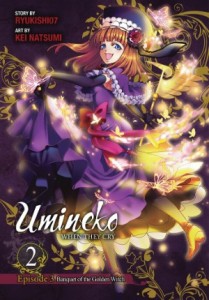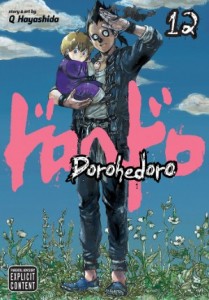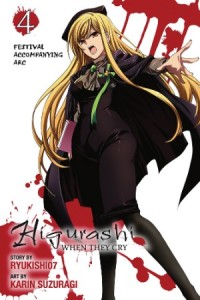By Shigeru Mizuki. Released in Japan as “Comic Shouwashi” by Kodansha. Released in North America by Drawn & Quarterly.
As you may have gathered from the dates, this volume covers the majority of World War II – referred to by Mizuki as “The Pacific War”, as it is in Japan. While we don’t neglect the average Japanese civilian back home, there is definitely more of an emphasis on battles, troop movements, and the machinations of war here, with so many Japanese general names flying past you will be grateful there are endnotes explaining who they all are. Interwoven into this is Mizuki’s own storyline, as he continues to fail at most everything he tries until the day he is drafted into the army… and manages to fail there as well, leading to a horrifying cliffhanger.
The narration of events continues to be done mostly by Nezumi Otoko, Mizuki’s filthy coward character from Gegege no Kitaro. He’s a bit less noticeable here, as the narration has to move so quickly it doesn’t allow time for anyone to make yokai jokes. Still, only Nezumi Otoko would stand behind Hitler, Mussolini and Tojo and wrap his arms around them in a ‘we’re buddies’ hug. This isn’t to say his narration is biased, though – Nezumi Otoko is quick to point out the lies and deceit that Japan uses to advance its own thirst for power. In addition, the fact that he is sort of ‘out of time’ means that he can have the occasional chat with Mizuki the artist, appearing as himself in a slightly less exaggerated version of the Mizuki we see living though his late teenage years.
General Yamamoto is mentioned early in the book, right around Pearl Harbor, that if he can turn the tide in 6-12 months, everything will go Japan’s way, but if it takes longer, America will end up winning. Most of the focus of this book is that extended narrative, as we see battle after battle where Japan marches in and takes over… and then the tide begins to turn, more men are lost, less land is gained, and the Japanese government decides to start lying to its people about what’s going on – the Battle of Midway’s true casualties weren’t known publicly till well after the war.
And then there’s Mizuki himself. As I said in my first review, I suspect that he is exaggerating his past self for comic relief, but there’s still a sense that this is a young man who cannot stop aimlessly drifting through his life, and is easily influenced by those around him. He’s also beaten, a lot – those who recall Onward Towards Our Noble Deaths will see a number of similar scenes here. The reward for the beatings seems to be rising in rank so that you can beat others in turn, but Mizuki never even gets that far. The most tragic part of the entire book for me when when, assigned to the bugle corps, he finds the job boring and demands a transfer. His superiors try to talk him out of this THREE TIMES, but to no avail. And so he’s sent to the front, and ends up fighting for his life as we get yet another amazing cliffhanger ending.
A whole lot of this book continues to be a history textbook of sorts. But then again, this is a manga written for Japanese people, telling them things that, at the time of its publication (and indeed to an extent today) the government was not comfortable with admitting. As a result, it can be a bit didactic. Mizuki is not entirely condemning Japan – he discusses the Bataan death march, and notes what little choice the Japanese military had there given the climate. But certainly this is more critical than we’re used to seeing, and the facts are so riveting that you’ll find you can’t stop turning the page. Add to this the art style, which continues to shift between photorealism and goofy sketches, and you’ve got a second volume that’s just as essential as the first.








 ANNA: Did you get your mother manga for Mother’s Day? Is it time to go shopping for yourself? There are a lot of mid-series volumes coming out this week, does one of them end up in your shopping bag? In the absence of any new series to pounce on, I’m probably going to have to highlight
ANNA: Did you get your mother manga for Mother’s Day? Is it time to go shopping for yourself? There are a lot of mid-series volumes coming out this week, does one of them end up in your shopping bag? In the absence of any new series to pounce on, I’m probably going to have to highlight  SEAN: Speaking of Hiro Mashima, we get the debut of one of his few remaining unlicensed series, Monster Soul. This is what he wrote in between Rave Master and Fairy Tail. Best of all, I think it’s only 2 volumes long.
SEAN: Speaking of Hiro Mashima, we get the debut of one of his few remaining unlicensed series, Monster Soul. This is what he wrote in between Rave Master and Fairy Tail. Best of all, I think it’s only 2 volumes long.
 MJ: I’m going to surprise myself a bit here by going for a title I hadn’t even heard about before
MJ: I’m going to surprise myself a bit here by going for a title I hadn’t even heard about before 











 MJ: I’m the one with an obvious choice this week, so I’ll start things off by reiterating what I said in
MJ: I’m the one with an obvious choice this week, so I’ll start things off by reiterating what I said in 
